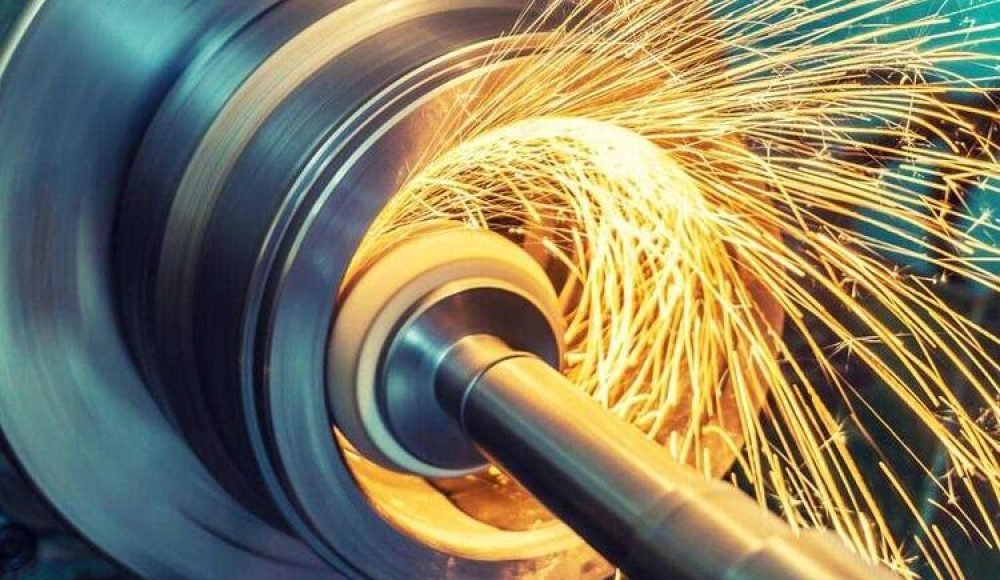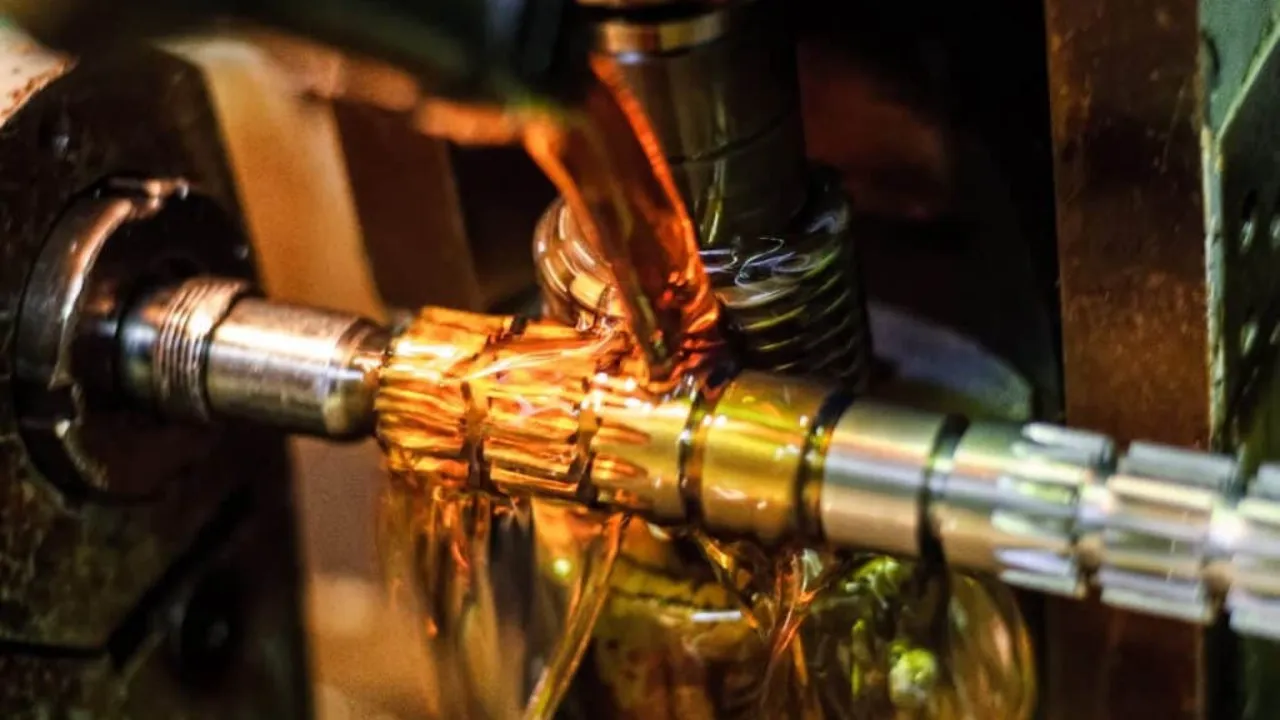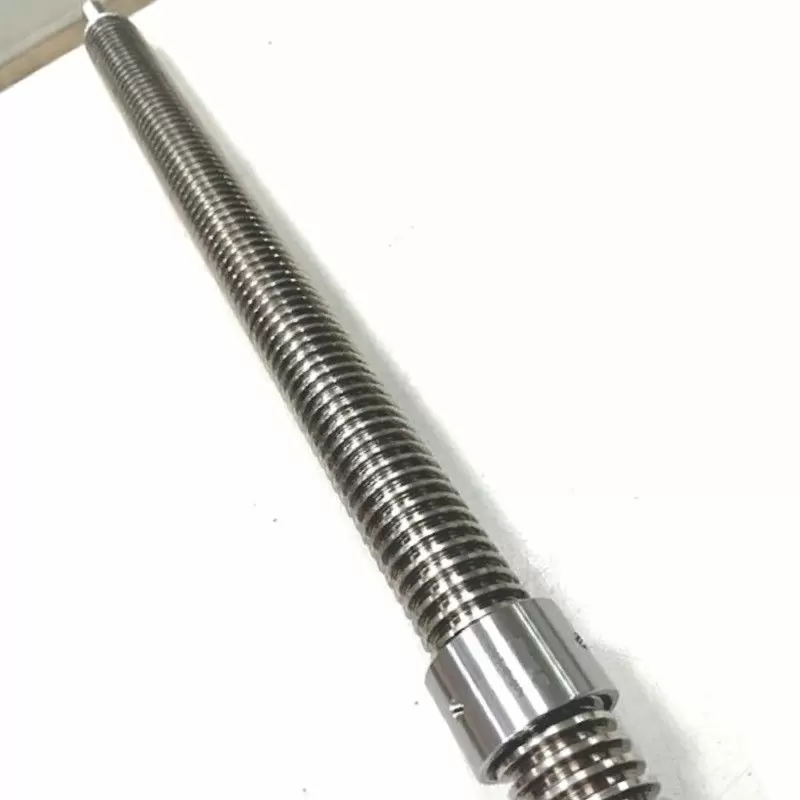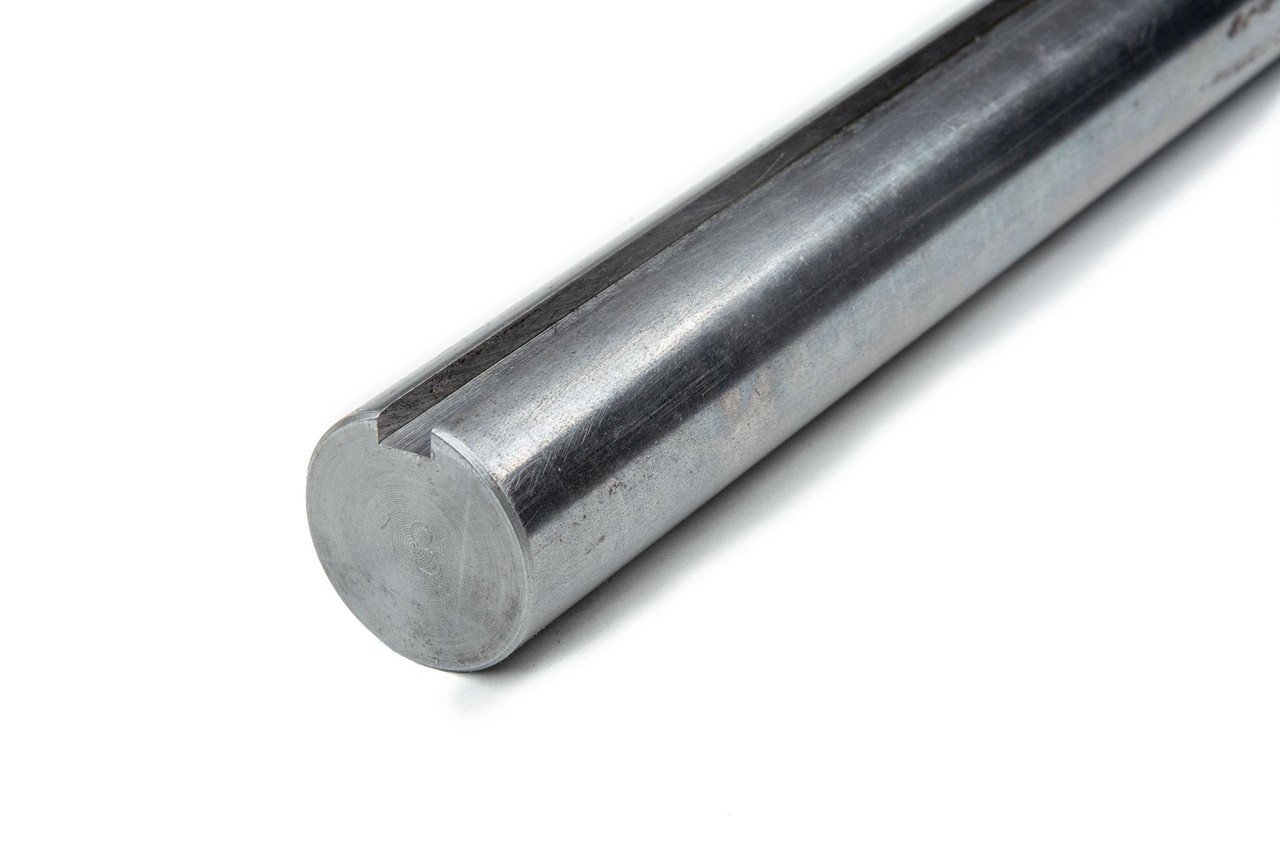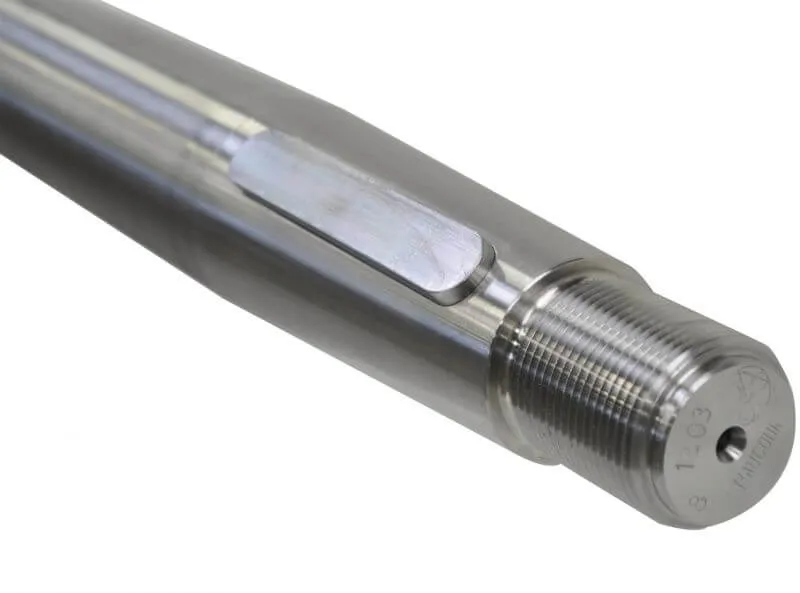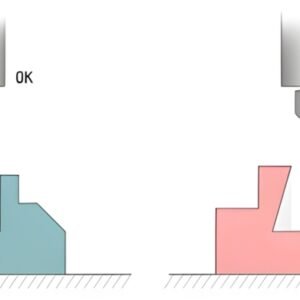モーターシャフトの加工は、精密工学における基本的かつ複雑なプロセスです. モーターからの回転力を被駆動部品に伝達する機械部品としてのシャフトです。. 電気自動車で使用されるかどうか, 産業用モーター, タービン, または医療機器, モーターシャフトの形状, 材料, 表面仕上げはシステムの効率と信頼性に直接影響します. このガイドでは、モーターシャフト加工の詳細な概要を説明します。, カバーシャフトタイプ, プロセス, 加工技術, 材料の選択, 仕上げ, および品質管理.
モーターシャフト加工とは?
モーターシャフト加工は、未加工の金属素材を、トルクと回転運動を伝達できる精密な円筒部品に変換するプロセスです。. これらのシャフトは、厳しい寸法公差と滑らかな表面仕上げに機械加工されています。, さまざまな負荷の下でも信頼性の高い動作を保証, 速度, および環境条件.
使用 CNC (コンピュータ数値制御) 機械, 切削工具は材料を除去して直径などの主要な形状を形成します, 肩, 溝, スプライン, そして先細りになる. 精度が最も重要です。シャフトの形状に誤差があると振動が発生する可能性があります。, 着る, または重要なアセンブリでの失敗.
モーターシャフトの種類
モーターシャフトにはさまざまな形状があります, それぞれが特定の機械的用途に合わせて調整されています:
ねじ付きシャフト
これらのシャフトには一端または両端におねじが付いています。, または全長に沿って, アセンブリ内でファスナーまたはコネクタとして機能できるようにします。. ネジ付きシャフトは電動アクチュエータで一般的に使用されます, リニアドライブ, とクランプ機構.
スプラインシャフト
縦方向の溝または隆起を特徴とする, スプラインシャフトが相手コンポーネントと連動し、滑りのないトルク伝達を保証します。. ギアボックスに広く使用されています, 航空機エンジン, および車両のドライブトレイン, 回転の同期を維持しながら軸方向の移動が可能です.
中空シャフト
中央のボアを備えた設計, 中空シャフトにより強度を保ちながら軽量化. キャビティには配線を収納できます, 流体チャネル, または計器類. 航空宇宙では一般的, ロボット工学, および自動化システム, 慣性を低減し、応答性を向上させます。.
キー付きシャフト
これらのシャフトは、外径に沿ってカットされた縦方向のキー溝を備えています。, 適合するキーとキー溝が相手ハブに適合するように設計されています. これにより、ポンプのトルク伝達と位置合わせのための強力な機械的ロックが作成されます。, モーター, と滑車.
テーパーシャフト
テーパーシャフトは、長さに沿って直径が徐々に小さくなります。, 嵌合コンポーネントとのセルフロック嵌合を実現. ホイールハブとフライホイールに共通, 追加の留め具を必要とせずに安全な接続を提供します。.
モーターシャフトの加工工程
荷重とトルクの計算
機械加工が始まる前, エンジニアは予想される最大トルクを計算する必要があります, 軸方向の, ラジアル荷重と. これらの値はシャフトの直径に影響します, 材料強度, 応力集中と, 設計が疲労寿命と安全要件を確実に満たすようにする.
CAD上での設計
SolidWorks や Autodesk Inventor などの CAD ソフトウェアの使用, エンジニアは詳細な 2D 図面と 3D モデルを作成します. CAD 設計により、すべての寸法と公差の要件が指定されていることを確認し、製造前に設計を最適化できます。.
CAMプログラミングとCNC加工
CAD モデルが CAM にインポートされます (コンピュータ支援製造) ツールパスとGコードを生成するソフトウェア. このコードは、CNC マシンの正確な動き、つまり旋削をガイドします。, フライス加工, 掘削, または研削 - 完成したシャフト形状を作成するため.
表面仕上げ
後加工, 表面処理により寸法精度が向上, 外観, 耐摩耗性, および腐食保護. これらの処理は用途や素材によって異なります.
モーターシャフト製造におけるさまざまなCNC加工技術
CNC旋削加工
CNC 旋削は同心フィーチャーの作成に最適です. 金属ブランクを回転させながら、固定された切削工具で外装を成形します。. 一般的な操作にはフェーシングが含まれます。, 外径・内径旋削加工, 溝, ねじ切り, そしてテーパー旋削.
CNCフライス加工
フライス加工では、回転切削工具を使用して、平坦部などの非円筒形状を形成します。, スロット, とキー溝. 多軸 CNC フライス加工により、複雑な形状と精密なカットアウトが可能になります.
CNC穴あけ加工
ファスナー用の精密穴, 潤滑, またはワイヤルーティングは自動穴あけ加工を使用して作成されます. これにより、正確な穴の位置決めが保証されます, 一貫した直径, そして再現性.
CNC研削
研削により最終的な表面仕上げと寸法公差が保証されます (多くの場合±0.002 mm以内). 研磨ホイールは最小限の材料しか除去しません, 高同心性と低表面粗さの実現に最適 (ラ < 0.4 μm).
放電加工 (放電加工)
EDM は放電によって材料を除去します, 硬化合金を切断したり、従来の機械加工では不可能な複雑な内部形状を作成したりするのに役立ちます。. 遅いけど精度は高い.
モーターシャフトの加工に使用される材料の種類
アルミニウム
軽量かつ耐腐食性, アルミニウム (例えば, 6061, 7075) ロボット工学における低負荷アプリケーションに最適です, オートメーション, そして小型モーター. 高い機械加工性により、コスト効率の高い生産も可能になります。.
炭素鋼
のような成績 1045 そして 1144 経済的で強い. 炭素鋼シャフトは、腐食が重大な懸念事項ではない産業機械に広く使用されています。.
ステンレス鋼
グレード 304 そして 316 優れた耐食性と強度を提供します. これらは食品加工でよく使用されます, 海洋, および医療機器. 316 より耐食性が高い, その間 304 より費用対効果が高い.
合金鋼
クロモリおよびその他の合金鋼は熱処理可能で非常に丈夫です. これらの材料は、自動車のクランクシャフトや頑丈なトランスミッションなどの高応力用途向けに選択されています。.
真鍮
優れた切削性と耐食性を備えています, 真鍮は、電気接点や機器コンポーネントなどの装飾用または低摩擦シャフトの用途に適しています。.
チタン
チタンの卓越した強度重量比と耐食性により、航空宇宙および船舶のシャフトに適しています。. 高価ですが, 極端な環境でも優れたパフォーマンスを発揮します.
ニッケル合金
インコネルなどの合金は高温に耐えます, 酸化, と腐食. ガスタービンやジェットエンジンに使用される, 機械加工は難しいですが、その性能は比類のないものです.
モーターシャフトのCNC加工時に考慮すべき要素
材料費
コストバランスに合わせて素材を選ぶ, 機械的性能, 耐食性. 炭素鋼は経済的です, 一方、チタンとインコネルは部品コストを大幅に増加させます.
加工時間と複雑さ
複雑な機能を備えたシャフト (スプライン, めねじ, 中空穴) より長い加工サイクルが必要になる, コストとセットアップ時間の増加.
工具のコスト
インコネルなどの硬化材料にはプレミアムツールが必要です. 工具寿命と交換頻度は長期的なコストに影響します.
労働と自動化
CNC 自動化により労働力の削減, ただし、手動のセットアップと検査は依然として必要です. 複雑なシャフトには複数のセットアップによる加工が必要な場合があります.
熱処理
硬化などの加工, 焼き戻し, 窒化処理により疲労強度と表面耐摩耗性が向上します。. しかし, 費用がかかり、処理後に追加の機械加工が必要になる場合があります.
品質保証
精密部品には寸法検証が必要です, 表面粗さ測定, および硬さ試験 - これらの手順は不可欠ですが、時間がかかります.
モーターシャフト加工における表面仕上げ工程
陽極酸化処理
主にアルミ用, 陽極酸化により耐食性が向上し、視覚的に識別できるように染色することができます。. シャフト表面に耐久性のある酸化皮膜を形成します。.
電気めっき
クロムの薄い層を追加します, ニッケル, または耐食性のための亜鉛, 摩耗保護, そして美学.
リン酸塩処理
鋼表面に結晶性リン酸塩層を形成して腐食に耐え、塗料の密着性を促進します。.
不動態化
ステンレスシャフトの鉄汚れ除去に使用します。, クロムを豊富に含む不動態表面層を形成することで耐食性を向上.
窒化処理
窒素を合金鋼表面に拡散します。, 歪みを最小限に抑えたハードケースを実現. ドライブシャフトなどの摩耗の激しい用途に最適.
溶射
溶融した材料をシャフトに吹き付ける高性能コーティング工法, 摩耗の改善, 熱, ベース寸法を変えることなく耐食性を向上.
モーターシャフト加工の品質管理
寸法検査
重要な寸法は CMM を使用して検証されます, マイクロメートル, 公差を確実に遵守するためのゲージ (通常 ±0.01 mm 以上).
表面粗さ試験
Ra 値の検証には、形状測定器または触覚テスターが使用されます。, 特に座面やシール界面に最適.
材質の検証
分光分析, 硬さ試験, 引張試験により、母材の適切なグレードと特性が保証されます。.
文書化とトレーサビリティ
加工記録の保管, 材料認定, 検査レポートは、生産品質を追跡し、規制基準を満たすのに役立ちます。.
外観検査と欠陥検査
シャフトに傷がないか検査されます, バリ, ツールマーク, または性能に影響を与える可能性のある表面の異常.
結論
モーターシャフトの加工は機械設計と製造の基礎です, ほぼすべての業界でシステムを循環させる上で重要な役割を果たしています. デザインや素材選びから仕上げ、品質管理まで, 各段階は正確かつ細部に注意を払って実行されなければなりません.
で 精度の高いトップ, 当社は最高の精度基準を満たすモーターシャフトの製造を専門としています。, パフォーマンス, そして耐久性. 専門家のアドバイスが必要な場合、または用途のニーズに合わせたカスタム加工の見積もりを依頼するには、今すぐお問い合わせください。.
よくある質問
1. Why is concentricity the most critical geometric tolerance for motor shafts?
Concentricity is paramount because a motor shaft’s function is purely rotational, transmitting torque at high speeds. Poor concentricity means the shaft’s centerline is misaligned with its axis of rotation, leading to:
-
Severe Vibration: Causes noise and dynamic imbalance.
-
Bearing Wear: Premature failure of bearings due to uneven loading.
- Reduced Efficiency: Loss of power and heat generation.
Manufacturers often use CNC grinding as the final process to ensure concentricity and diameter tolerance are within the required micron-level specifications.
2. How do keyed shafts and splined shafts differ in torque transmission?
Both types transfer torque without slippage, but they differ in engagement and load distribution:
-
キー付きシャフト: Rely on a single keyway and key to lock the hub, concentrating the load and stress at a single point, which is suitable for moderate torque applications.
-
スプラインシャフト: Feature multiple longitudinal grooves (スプライン), distributing the torque load evenly across a much larger surface area. This allows splined shafts to handle significantly higher torque loads and provides greater alignment precision, making them common in heavy-duty transmissions.
3. Why are hollow shafts preferred over solid shafts in high-performance applications like robotics?
Hollow shafts are preferred because they significantly reduce rotational inertia while often retaining sufficient strength. Reducing inertia allows the motor system (especially in robotics or automation) に accelerate, decelerate, and reverse direction faster and with less energy. さらに, the central bore provides a convenient channel for routing internal wiring, センサー, or fluid lines without external interference.
4. What finishing process is used to enhance the surface hardness and fatigue strength of alloy steel shafts?
窒化処理 is the key finishing process. Nitriding involves diffusing nitrogen into the surface of alloy steel at elevated temperatures. This creates a hard, 耐摩耗性 case depth without the need for quenching, thus causing minimal dimensional distortion. This makes it ideal for high-wear areas like bearing journals or gear engagement surfaces, significantly improving the shaft’s fatigue life under cyclic loading.
5. Why is Electrical Discharge Machining (放電加工) sometimes used in motor shaft production despite being slow?
EDM is used exclusively when the required feature cannot be machined using conventional methods due to 材質の硬さ または geometry complexity. It is often used to:
-
Cut keyways or slots in already fully hardened alloy steel shafts.
- Create complex internal features or precise micro-holes without introducing mechanical stress.
EDM removes material through spark erosion, making the process slow but capable of extreme precision regardless of the material’s hardness.
6. How does the choice of stainless steel grade (304 対. 316) impact shaft application?
-
304 ステンレス鋼: Offers good corrosion resistance, 優れた加工性, and is generally more 費用対効果の高い. It is suitable for general industrial, 食べ物, and non-marine applications.
-
316 ステンレス鋼: 含まれています モリブデン, which provides significantly 優れた腐食抵抗, particularly against chlorides, 塩水, and strong acids. It is the preferred, albeit more expensive, choice for marine, pharmaceutical, and chemical processing shafts.
7. What role does Surface Roughness Testing (Ra値) play in motor shaft quality control?
表面粗さ試験, usually measuring the average roughness ($Ra$), is critical because the shaft’s surface interacts directly with bearings and seals.
-
Low Ra (滑らかな仕上げ): Essential for bearing journals to minimize friction, 発熱, and wear on the bearing.
-
Controlled Ra: Critical for シーリングサーフェス (where the shaft passes through a seal) to ensure the seal maintains integrity without rapidly wearing out the lip. Roughness that is too high or too low can cause failure. Typical Ra requirements for bearing surfaces are often less than 0.4 μm.

